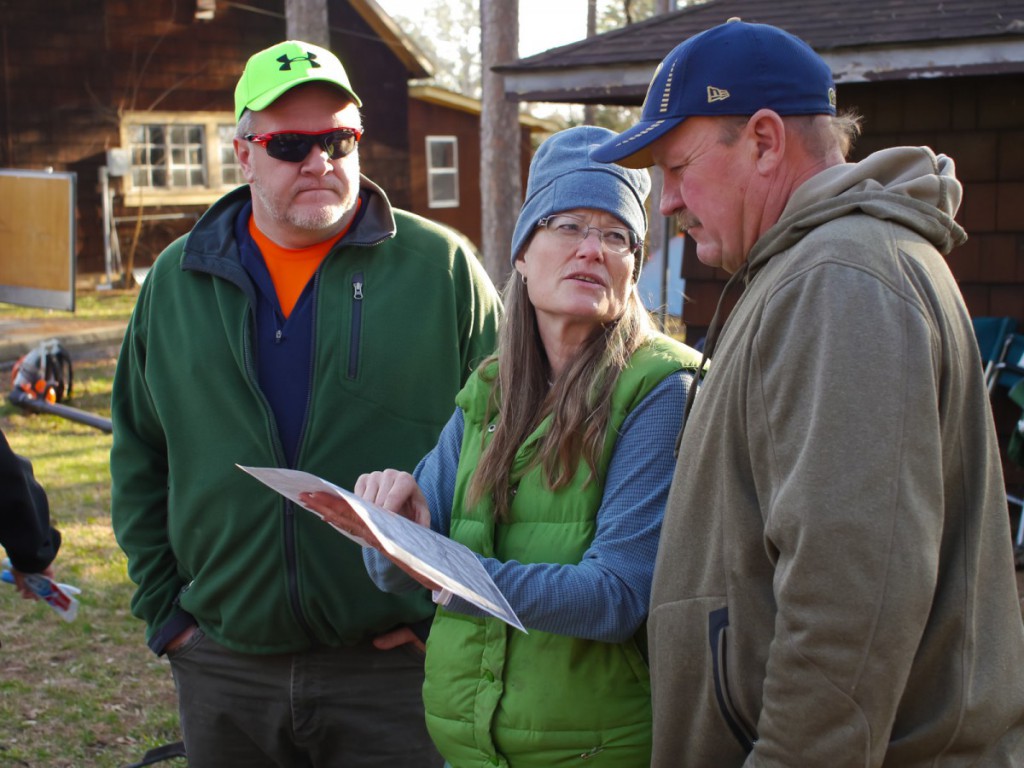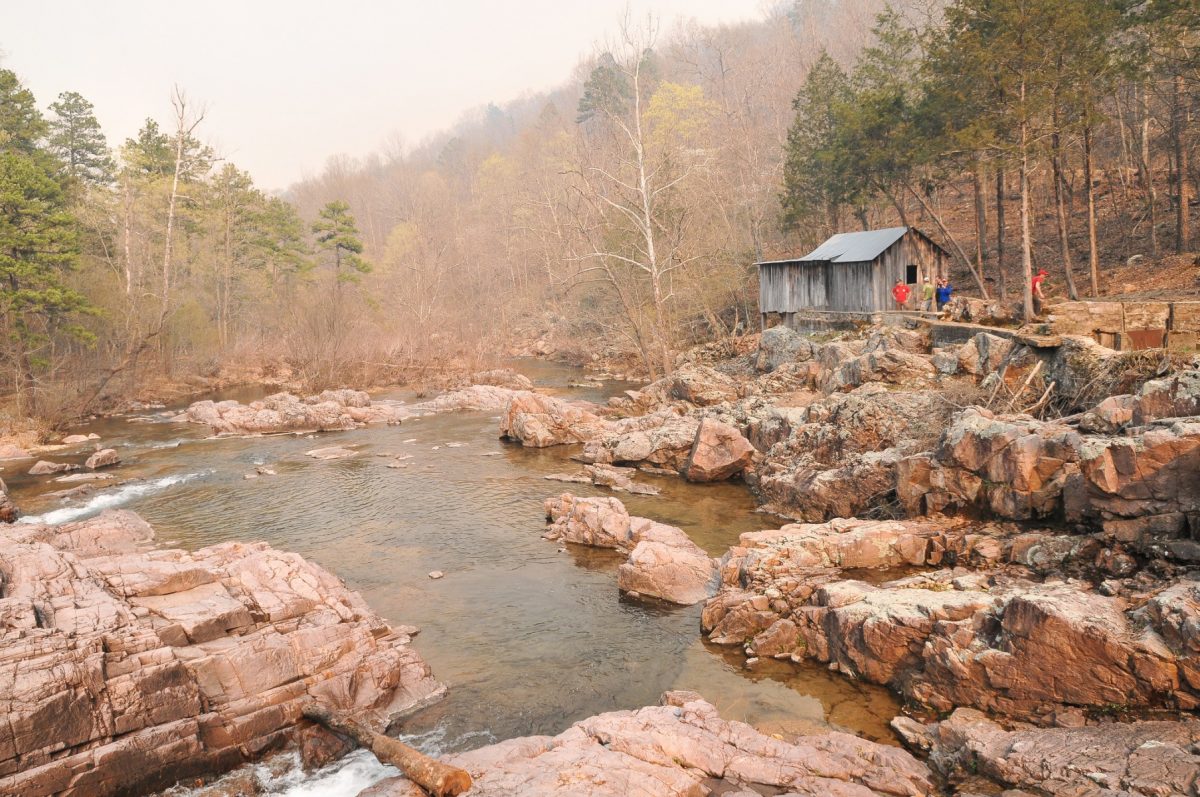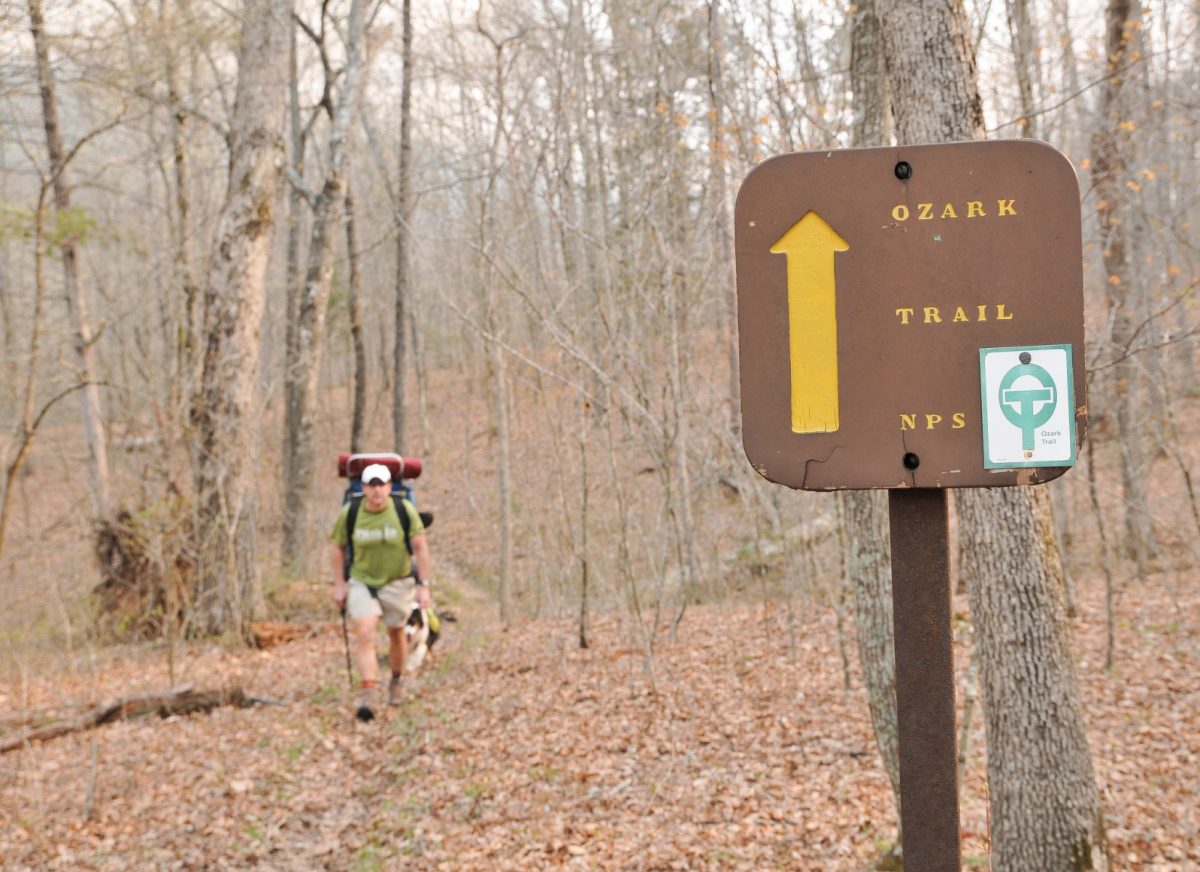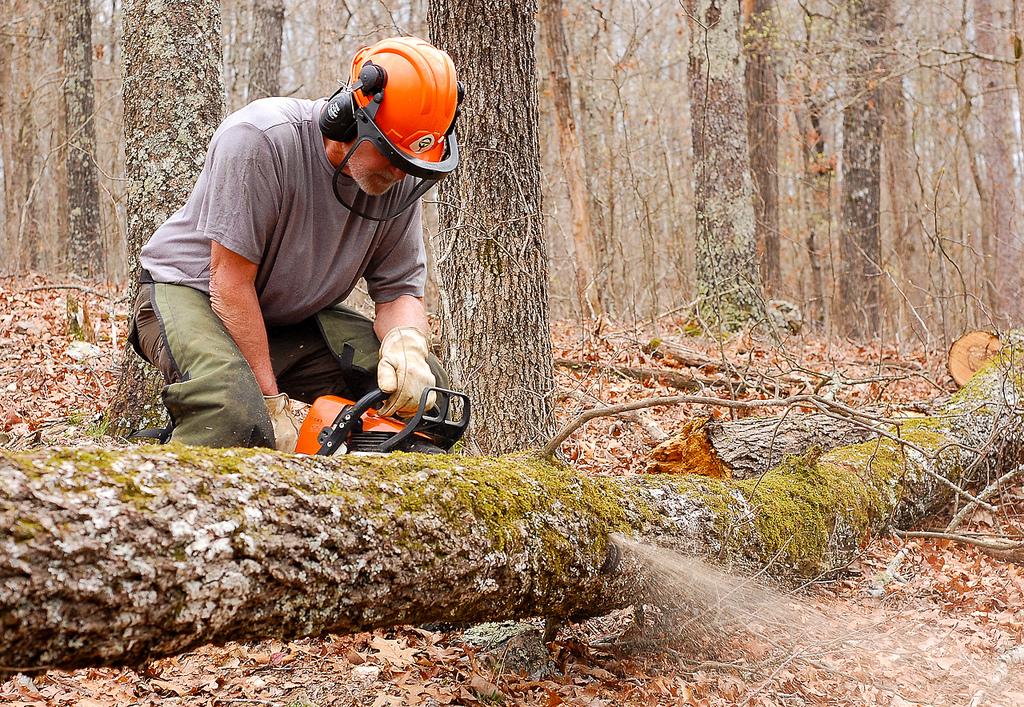Ask Kathie Brennan about her involvement with the Ozark Trail Association (OTA), and she’ll speak enthusiastically and nearly ad infinitum of lopping branches, sawing downed trees, weed-eating briar patches, digging in the dirt, building new trails.
“I just love doing hard work,” she says. “I don’t know what it is about sweating and that kind of thing, I just enjoy it.”
It’s a passion rivaled only by her love of nature.
For Brennan, the OTA has been the perfect convergence of the two, allowing her to work hard for something she believes in.
“You see the difference you make on the trail,” she says, “and know that people are coming to it because of the efforts being made to protect and preserve it.”
But Brennan wasn’t always what one would call an “environmentalist.” A long-time naturalist for Trail of Tears State Park in southwestern Missouri, Brennan first got involved with the OTA at the urging of a co-worker, volunteering for a trail project. And while she enjoyed the experience, she wasn’t quite sure it was for her.
“It was about a year and a half or two years later before I joined as a member because, I hate to say it, but I didn’t want to be with a bunch of tree huggers.”
“It was about a year and a half or two years later before I joined as a member because, I hate to say it, but I didn’t want to be with a bunch of tree huggers,” Brennan says, admitting now that her assumptions were somewhat misguided.
Brennan, modest and candid, isn’t motivated by a desire to push some environmental agenda. “I just wanted to be told, ‘This is how you build trails: You dig in the dirt, you move the dirt, and at the end of the day, this is what you have,’” she says. “At the end of the day, you walked out of a trail that wasn’t there that morning. And it felt good.”
That was 2007. Brennan now leads the organization as its president — a role that she unwittingly found herself assuming two years ago.
“The guy who had been president before me is an MIT graduate, so he’s super, super smart, and I feel like the country bumpkin,” she says. “I’m just this little common person.”
Founded by John Roth in 2002, the OTA is a nonprofit whose mission is to maintain and protect the Ozark Trail. But much of its work has included building sections of trail as well, as part of the larger effort to create one continuous pedestrian, and in places biking and equestrian, trail through the Missouri Ozarks.

What began as a “joint effort of seven governmental agencies, one private landowner and several environmental groups,” according to the OTA’s website, has since become almost entirely the work of the OTA. As these entities’ ability to maintain the trail became more difficult, “that’s where the Ozark Trail Association came into being,” says Brennan, “because John saw the need for picking up that slack.”
“He was the one who discovered the trail in the condition it was in and decided to make it better by creating the all-volunteer OTA,” she says.
Roth, who passed away suddenly in 2009, inspired many people through his work with the organization.
“I want to see good things happen for that trail, and a lot of that is because of John Roth,” says Brennan. “He was very influential to so many of us.”
She is quick to point out, however, that although the organization oversees upkeep, it is not the trail’s keeper.
“We’re the minions of the trail; we don’t own it. We’re just the ones who have decided it’s our mission to maintain it, protect it, promote it, develop it and keep it going.”
“We’re the minions of the trail; we don’t own it,” explains Brennan. “It’s a public trail. We’re just the ones who have decided it’s our mission to maintain it, protect it, promote it, develop it and keep it going, because the land managers — federal and state — don’t have the budget … or the manpower.”
Yet, it hasn’t been an easy endeavor for the OTA either. For one thing, building and maintaining trails, particularly 400-plus miles of trail, is both arduous and endless.
“We’ve been joking about how we can walk the trail and cut the trees, but we know they are behind us looking at each other going, ‘OK, they’re gone, let’s fall,’” Brennan says.
The first female member of the OTA to become a U.S. Forest Service certified sawyer (aka, chainsaw operator), Brennan has done — and continues to do even as president — more than her fair share of upkeep. With either a pair of loppers, a chainsaw or leaf blower in hand, she walks the trail, on the lookout for downed trees and branches, overgrown brush and briar patches, piles of leaves, anything that could impede trail users.

“A lot of people are like ‘Oh, I’m so envious, you get to go to the woods all the time,’ and I’m like, ‘Do you want to join me, because it’s a lot [of work]?’” Brennan says. “People go, ‘Well, do you hike the Ozark Trail?’ and I go, ‘I maintain the Ozark Trail; that’s my hiking.’”
Although she doesn’t get to hit the trail for the simpler, more solitary kind of pleasures as often as she would like, Brennan says she’s covered “a good three-fourths of it” through her work. All of which she seems to enjoy — particularly leaf blowing.
“It’s amazing what a leaf-blown trail looks like,” she says. “And the people who I get to do it for me, I grab their arm and look them in the eye, and I’m like, ‘It’s instant gratification, trust me.’ And sure enough, at the end of the day, they’re like, ‘Oh my God, it’s amazing.’”
Yet, for all the work the OTA and its volunteers do, there will always be those who bellyache.
Initially proposed in 1976, the Ozark Trail was under construction within five years. Envisioned as a continuous trail stretching from St. Louis to Arkansas — where there was talk of connecting it with the Ozark Highlands Trail to form a 700-mile path — the Ozark Trail is still a work in progress.
Some have criticized this lack of movement, while others have complained about the state of the trail. But Brennan stands firm in her convictions, passionate about completing and maintaining the trail but also refusing to push her volunteers too hard.
“We will get emails that say, ‘Hey, when is the OTA going to go out and clean up this section of trail?’ or ‘When are you going to go out and cut the briars back on this section?’” she says, adding that, particularly in extreme weather, she’s not going to ask her volunteers to go out. “They’re not young spring chickens. These are people who are 50, 60, 70-some years old, and they go out because they are retired or have extra time. … I dodn’t want anybody to die or get hurt.”
“If you see a need, become part of the solution, not just complain about it.”
“It’s a public trail,” she adds, “so if you see a need, become part of the solution, not just complain about it. If you see where the briars are growing up, go out and cut them with your weed eater and send in a trail report.”
Brennan also encourages people to go one step further by either volunteering with the OTA or adopting a section of trail. The latter, she says, mostly involves hiking a portion of the trail to remove branches and sticks and, if a tree has fallen, make note of the GPS coordinates so that a member of the OTA can go out later.
While Brennan says the Ozark Trail is moving forward “in small increments,” the OTA’s timeline is based on what volunteers are able to give.
Beyond being limited by the number and age of its volunteers, the OTA is also restricted by funding. Although the organization can use grants from the Recreational Transportation Program to finance the building of new trails, Brennan says those funds can’t be used for maintenance.
“With the grants that we get to build trails, we’re bound for 25 years to maintain those, so they have to be built sustainably,” she says. “That means we have to watch where the grade is, the water flow; you don’t want erosion, that kind of thing. So [we have to] build sustainable trail so that it doesn’t turn into problems down the road.”
Brennan believes funding will continue to be the OTA’s most significant hurdle going forward, particularly when it comes to affording insurance. “You have to have insurance to put boots on the ground,” she says.

As much as Brennan enjoys her work, she notes that she’s “not getting any younger.”
“I really enjoy it,” she says, “but I also have to realize, I’m 63.”
For all the time, sweat and energy she has put into making the Ozark Trail what it is — a tremendous resource for hikers, backpackers and mountain bikers alike — Brennan hopes she has helped instill in people, especially children, a passion and appreciation for the outdoors. She believes doing so is especially important at a time when people either are too busy to make time to get outdoors or don’t have a way of getting there to begin with.
She encourages reaching out to kids who don’t have the opportunity to experience nature to instill in them a lifelong passion for protecting it. “Once you do, maybe in one in 10 you’ll light that spark, and all of a sudden it’s like, ‘Yeah, they’re going to make a difference,’” says Brennan.
She believes it’s also important to educate people about nature; that our natural resources aren’t limitless can’t be understated, Brennan says. “We can’t take them for granted. And that’s really hard to impress upon individuals who don’t know what it’s like to be in the forest or to even go out someplace where they can see the stars at night,” she says.
For now at least, Brennan refuses to let her age hold her back. She can still be found on the trail, leaf blower or chainsaw in hand, working hard to ensure the path is clear for the next person to come through.
“I wax and wane sometimes with my abilities, but I think I’m pretty strong in what I do,” Brennan says. “I don’t take for granted what tomorrow is. If I can just make the trail a better place for people to go to and enjoy, that’s what I want to do.”





